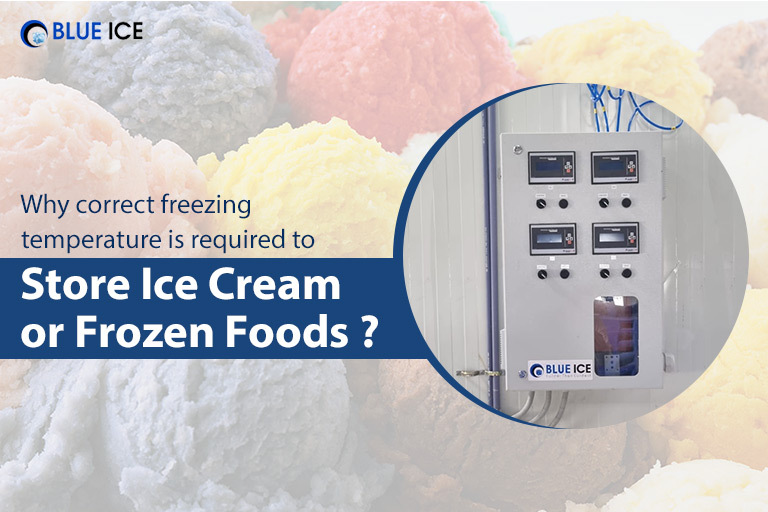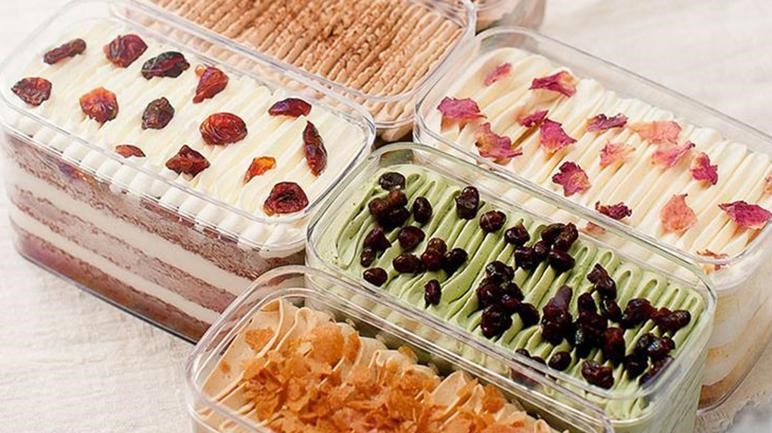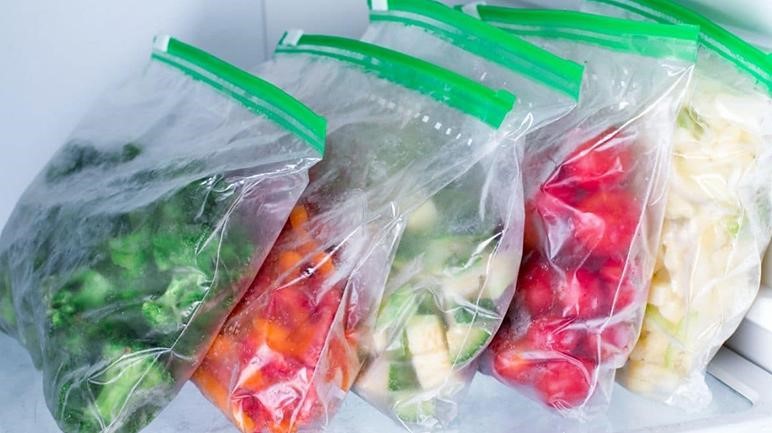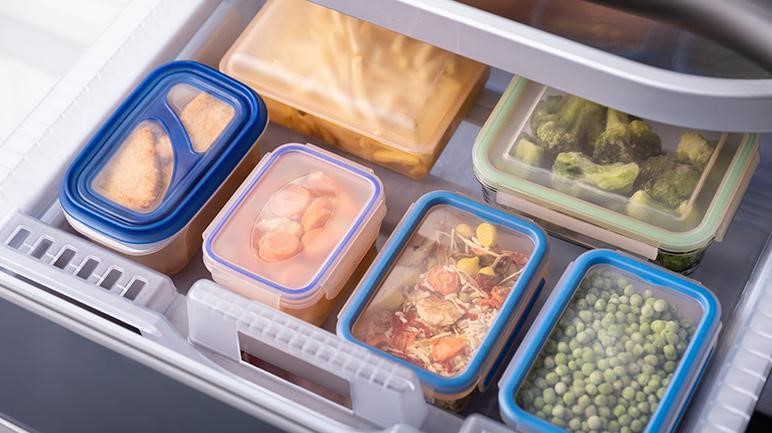
Cold Storage Company

Cold Storage Company

Ice cream and frozen foods have been popular choices for many people as a convenient meal or a delicious dessert. However, not many people are aware of the significance of the correct freezing temperature for preserving the quality and safety of these frozen products.
The correct freezing temperature plays a critical role in maintaining the texture, flavour, and appearance of these products, as well as preventing the growth of harmful bacteria that can cause foodborne illnesses. In this article, we will discuss why the correct freezing temperature is essential for storing ice cream and frozen foods.
Science Behind Freezing

Freezing is a process that involves reducing the temperature of a substance below its freezing point, causing it to solidify into a frozen state. In the case of ice cream and frozen foods, the process of freezing is a critical step in preserving their quality and safety.
Factors that Affect the Freezing Process

Several factors can affect the freezing process, including the composition of the product, the initial temperature of the product, the temperature of the freezer, and the time it takes for the product to freeze. The faster a product is frozen, the smaller the crystals will be, which will result in a smoother texture. Additionally, the composition of the product, such as the amount of sugar or fat, can also affect the freezing process and the resulting texture.
Incorrect storage temperature can have a significant impact on the texture, flavour, and appearance of ice cream and frozen foods and here’s how.
When stored at an incorrect temperature, ice cream and frozen foods can experience changes in texture. If the temperature is too high, ice crystals will grow larger, resulting in a gritty or icy texture. This is because the water molecules in the product are allowed to move around more freely, causing the crystals to grow larger. Conversely, if the temperature is excessively low, the product may solidify and become difficult to scoop. In this case, the product is likely to be overly dense and may even have a rubbery texture.
In addition to texture changes, incorrect storage temperature can also impact the flavour of ice cream and frozen foods. If the temperature is too low, the product may not thaw evenly, making it difficult to fully taste and enjoy the flavours. Conversely, if the temperature is too high, the product can start to thaw, leading to flavour loss and even spoilage.
Finally, the appearance of ice cream and frozen foods can also be impacted by incorrect storage temperature. Freezer burn is a common issue when frozen products are not stored properly. It occurs when the product is exposed to air and the water molecules on the surface of the product sublimate, causing it to become dry and discoloured. This can give the product a leathery texture and make it appear unappetizing.
Incorrect storage temperature can have a significant impact on the texture, flavour, and appearance of ice cream and frozen foods. It is essential to store these products at
the correct temperature to ensure that they remain smooth, flavorful, and visually appealing.
Temperature plays a crucial role in ensuring the safety of ice cream and frozen foods. Incorrect storage temperature can lead to the growth of harmful bacteria, resulting in foodborne illness. Let's take a closer look at how temperature can impact the safety of these products.
● Incorrect storage temperature can lead to the growth of harmful bacteria, resulting in foodborne illness.
● Listeria monocytogenes, Salmonella, and E. coli can grow in frozen products if stored at incorrect temperatures
● Incorrect storage temperature can cause the breakdown of certain chemicals in the product, leading to the formation of harmful compounds.
● Harmful compounds, such as histamines and acrylamide, can cause illness if consumed in large amounts.
● The FDA recommends storing frozen foods at 0°F (-18°C) or below to ensure their safety.
● It is important to regularly monitor the temperature of the freezer or storage area to ensure that it remains at the correct temperature.
● Storing frozen foods at the correct temperature and regularly monitoring the storage area are essential to ensure their safety.

The recommended freezing temperature for ice cream is between -5°F (-20°C) and 0°F (-18°C). This temperature range is essential for preserving the quality, texture, and taste of ice cream.
If ice cream is stored at temperatures that are too warm, it can cause the product to melt and refreeze, resulting in ice crystals forming throughout the ice cream. This can negatively impact the texture and quality of the product, making it less smooth and creamy. Additionally, ice cream that is stored at too warm of a temperature can cause the flavours to break down, resulting in a less flavorful product.


When selecting a freezer or freezer storage unit, there are several important factors to consider to ensure that the unit is suitable for your needs. Here are some factors to consider:
● Size:
Consider the amount of frozen food or ice cream you need to store and select a freezer unit that can accommodate your needs. Make sure to measure the space where you plan to store the freezer to ensure that it will fit.
● Temperature control:
Look for a freezer unit with reliable temperature control, preferably with a digital display that allows you to set and monitor the temperature. Some units may also have an alarm system that alerts you if the temperature falls outside the recommended range.
● Energy efficiency:
Consider the energy efficiency of the freezer unit and look for models with an Energy Star rating, which indicates that the unit meets energy efficiency guidelines set by the Environmental Protection Agency.
● Storage options:
Look for a freezer unit with adjustable shelves or baskets that allow you to customise the storage space to your needs. Some units may also have door storage or compartments for smaller items.
● Maintenance and cleaning:
Consider the ease of maintenance and cleaning when selecting a freezer unit. Look for models with easy-to-clean surfaces and removable shelves or baskets for easy cleaning.
● Noise level:
If you plan to store the freezer in a shared living space, consider the noise level of the unit and look for models with quiet operation.
By considering these factors, you can select a freezer or freezer storage unit that meets your needs and helps to ensure the safety and quality of your frozen foods and ice cream.
If you are in the food industry and looking for a reliable solution to maintain the correct freezing temperature for storing ice cream and frozen foods, we at Blue Ice Puf Panels and Refrigeration can help. With over 18 years of experience, we offer a complete range of products and cold chain solutions to choose from, ensuring that you find the perfect fit for your applications.
At Blue Ice, we pride ourselves on providing excellent solutions for our customers, and we offer both indigenous and imported equipment for positive and negative temperature applications. So, if you want to ensure that your frozen products are stored at the correct freezing temperature, consider working with us. With our commitment to providing world-class refrigeration products to preserve food for generations to come, you can trust that we will provide you with the best solution for your needs.
Queries
If ice cream or frozen foods are stored at the wrong temperature, they may lose their quality, texture, and safety. If the temperature is too high, the products may become soft, lose their shape, and develop ice crystals, which can affect their taste and texture. If the temperature is too low, the products may become too hard and difficult to scoop or eat. Additionally, storing frozen foods at the wrong temperature can promote the growth of harmful bacteria that can cause foodborne illnesses.
You can ensure that your freezer is set to the correct temperature for storing ice cream and frozen foods by using a thermometer to check the temperature. Place the thermometer in the freezer for a few hours, and then check the reading. If the temperature is below 0°F (-18°C), the freezer is at the correct temperature. If the temperature is too high, adjust the temperature setting on the freezer accordingly
The storage time for ice cream and frozen foods in the freezer can vary depending on the type of product and its packaging. Generally, ice cream can be stored in the freezer for 2-4 months, while frozen fruits and vegetables can be stored for 8-12 months. It is important to check the packaging or manufacturer's instructions for specific storage recommendations. It is also important to note that once the product is thawed, it should be consumed within a certain timeframe to ensure its safety and quality.